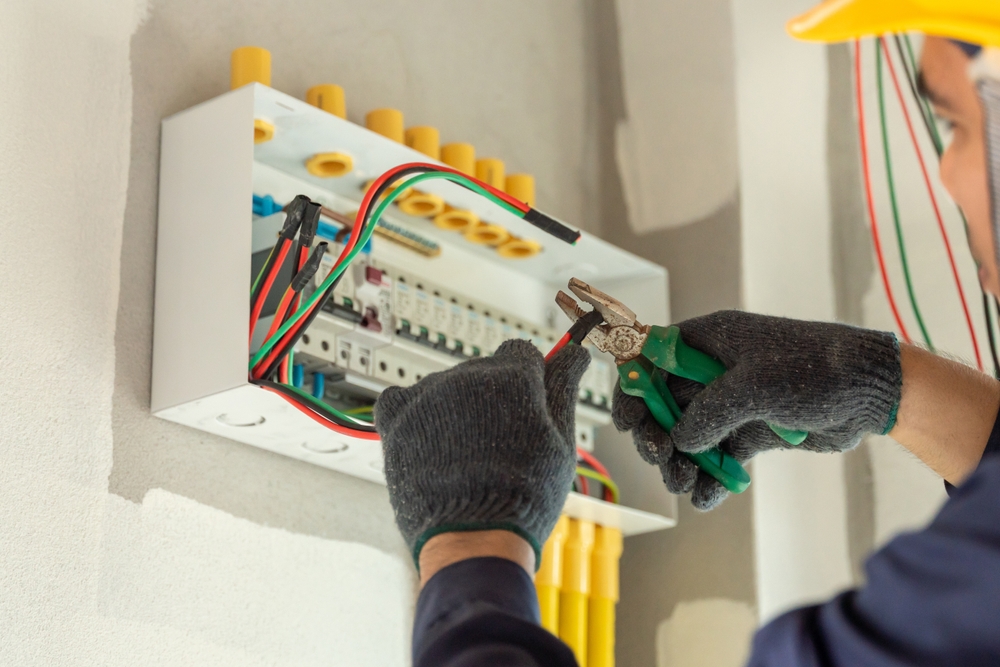Electrical wiring is an essential element of every structure – residential, commercial, or industrial alike – as its installation ensures safety, efficiency, and long-term functionality for electrical wiring estimating in any structure. Understanding different wiring types is vital not just to electricians but to anyone involved with estimating electrical systems as a whole. In this article, we introduce four main varieties of wiring with their specific characteristics, applications, and benefits outlined.
Cleat Wiring
Cleat wiring is one of the simplest and earliest forms of electrical wiring systems used on construction sites or temporary buildings, typically for temporary installations that will only remain for short durations such as at construction sites or temporary housing complexes. In this system, insulated wires are supported on porcelain cleats secured at regular intervals along walls or ceilings – offering some degree of protection from external damage while keeping everything neatly organized. Cleat wiring may be cost-effective and easy to implement; however, permanent installations do not use this approach due to its exposed wires being vulnerable to mechanical wear and tear and environmental elements like moisture.
Casing and Capping Wiring
Casing and capping wiring is another traditional wiring method commonly seen in older buildings or situations where aesthetics is less of an issue. Electrical wires are enclosed within wooden or plastic casing and protected with an appropriate cap made of either wood or plastic for adequate protection from both external elements and mechanical damage. This solution offers moderate protection for electrical circuitry. Although once widely utilized, casing and capping wiring has since largely been phased out due to its bulkiness and tendency toward degradation over time.
Conduit Wiring
Conduit wiring is an efficient and safe means of electrical wiring that utilizes metal or plastic conduit to encase wires within its protective confines for superior mechanical, moisture protection as well as fire safety protection. Conduits may either be rigid or flexible depending on installation requirements – often seen in industrial settings, commercial properties, and some residential settings. Conduit wiring offers many benefits when conducting electrical estimating; its primary advantage being protection.
Batten Wiring
Batten wiring refers to an installation method where single or dual-core insulated wires are fastened onto wooden battens using brass clips, typically for indoor uses such as domestic installations or low-voltage systems. While batten wiring offers a quick, cost-effective, and simple solution, its durability or safety do not compare favorably with conduit wiring systems. Batten wiring’s primary drawback lies in its susceptibility to external damage; wires remain exposed despite partial protection by battens. Therefore, this method should typically only be considered when low-cost wiring solutions are necessary or where exposure hazards are limited; electrical estimating for batten wiring typically accounts for decreased durability and the possible need for ongoing maintenance services.
Finding the Right Type of Wiring
Selecting electrical wiring depends on a number of considerations, including installation environment, structure type, and requirements for safety as well as cost considerations. Conduit wiring might be preferred due to its durability and protection factors while low-cost domestic installations might opt for batten wiring as an economical alternative. Electrical estimation is another integral element in selecting the appropriate wiring solution, with costs related to materials, labor, and long-term maintenance weighing heavily in decision-making processes. Assessing these factors ensures that any chosen solution fits with both budgetary constraints and safety needs for any given project.
Safety Considerations in Electrical Wiring
Safety should always be top of mind when installing and selecting electrical wiring. Improper installation could lead to short circuits, electrical fires, or other hazards that threaten public health – particularly with methods like cleat wiring which offer minimal protection from external elements such as moisture. On the contrary, conduit wiring offers safer and more reliable alternatives in high-risk environments. Safety must always be top of mind when conducting electrical wiring estimates, including environmental considerations such as where and how the wiring will be installed, along with any specific safety regulations or codes that must be observed.
You may also like: how much wire is required for a home
Efficiency and Performance
Electrical system efficiency and performance may depend upon the type of wiring chosen; conduit wiring typically offers superior long-term performance due to its protective capabilities; this feature makes conduit an invaluable choice in industrial or commercial settings where electrical systems must withstand additional wear over time. As opposed to direct wire wiring methods, methods that encase and cap wiring require more frequent repairs or replacement, so electrical estimates must include anticipated costs associated with such maintenance or replacement when choosing the most cost-effective wiring solution.
Installation Costs
A key consideration in selecting electrical wiring systems is installation costs. Different methods come with their own set of material and labor expenses – for instance, conduit wiring can be more costly due to additional materials needed and special labor; on the other hand cleat or batten wiring could prove less costly but require ongoing maintenance services over time.
Accurate electrical wiring estimating ensures all costs, such as installation and long-term maintenance expenses are factored into the project budget and helps protect against unexpected expenses while remaining financially feasible.
Maintenance and Longevity
The longevity of an electrical wiring system depends heavily on both its type of installation and the quality of materials used. Conduit wiring offers long-term protection that requires less upkeep whereas other methods, like cleat or batten wiring, may need repairs due to environmental exposure. Electrical estimation requires taking into account both upfront and ongoing maintenance costs; while certain wiring methods might appear more cost-effective at first glance, their ongoing requirements might make them more expensive over time.
Conclusion
Understanding the various forms of electrical wiring is vital to making informed decisions about installations. From cleat and casing and capping wiring systems to conduit and batten wiring methods, each method offers distinct advantages and drawbacks that need to be considered when selecting an optimal type for any given installation project. When making these choices it is also necessary to take safety, cost, efficiency, and project-specific criteria into consideration before selecting an ideal method of wiring. Successful electrical wiring estimating is essential to striking the optimal balance between cost and performance in any project, whether residential, commercial, or industrial. Knowing each wiring type’s respective strengths and weaknesses is vital in making an intelligent choice that ensures long-term success for any endeavor.



